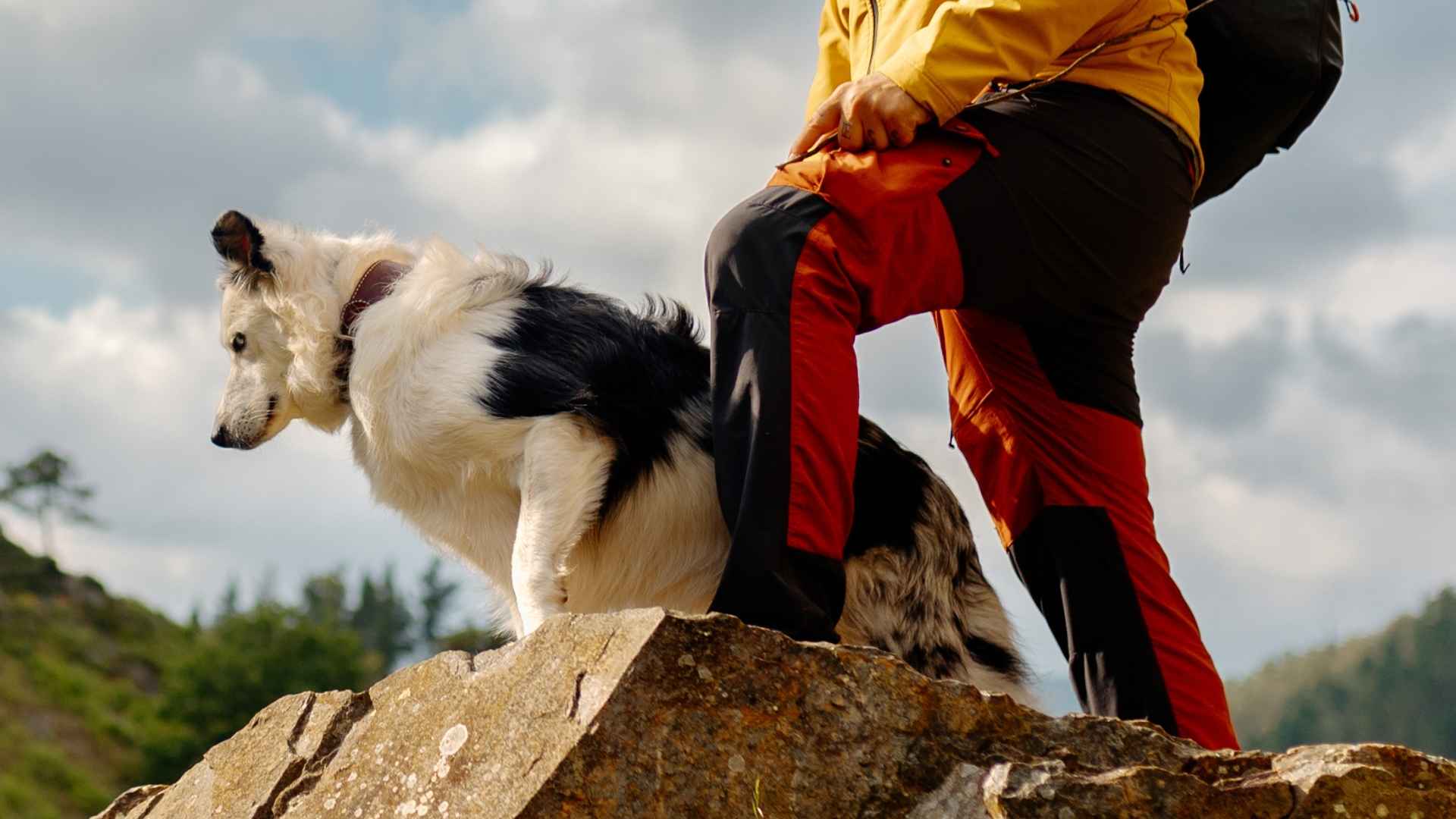There’s something deeply rewarding about escaping into nature, and it gets even better when your best four-legged friend is by your side. Hiking isn’t just a great way to disconnect from daily stress; it’s also an excellent form of cardiovascular exercise that boosts strength, lowers blood pressure, and enhances overall well-being. And when you pair that with a dog’s boundless energy and love for the outdoors, you’ve got a winning combination.
While dogs are famously known as loyal companions, not all breeds are built for long-distance trekking across rough terrain. Some are more suited to a cozy nap on the couch than a steep mountain trail. That’s why choosing the right breed is key if you’re planning to bring a pup along on your hiking adventures.
Luckily, several dog breeds have both the stamina and spirit to match your active lifestyle. From high-energy trail runners to resilient, weather-loving partners, these breeds make ideal hiking companions ready to explore the great outdoors with you.
Companion Dog Breeds For Hiking
1. Siberian Husky
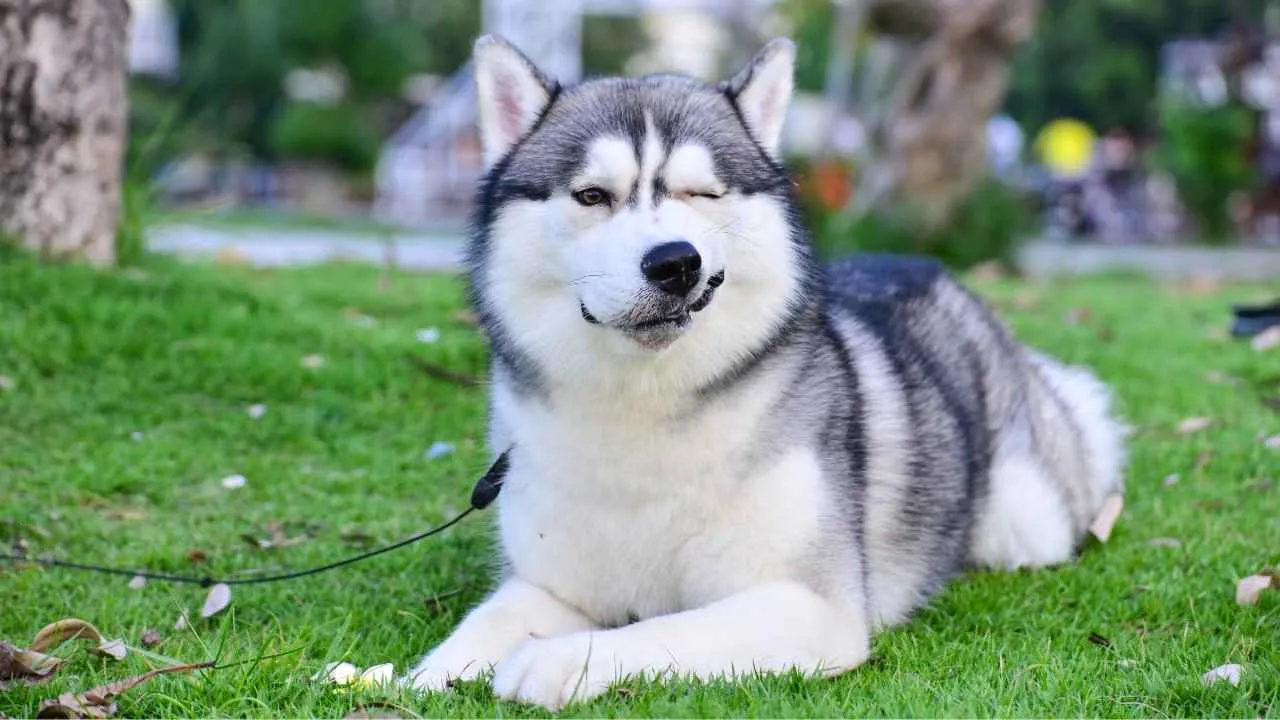
The Siberian Husky, often affectionately called the Sibe or Chukchi dog, is a spirited and resilient working breed that thrives in outdoor environments. Originally developed by the Chukchi people of Siberia to haul sleds over long distances, this breed boasts a muscular frame, erect triangular ears, and a dense double coat suited for harsh climates.
Standing between 20–24 inches tall and weighing 35–60 pounds, Huskies are part of the Working Group and are known for their graceful movements, stamina, and sociable nature. Their boundless energy, agility, and enduring spirit make them perfect trail companions for long and challenging hikes.
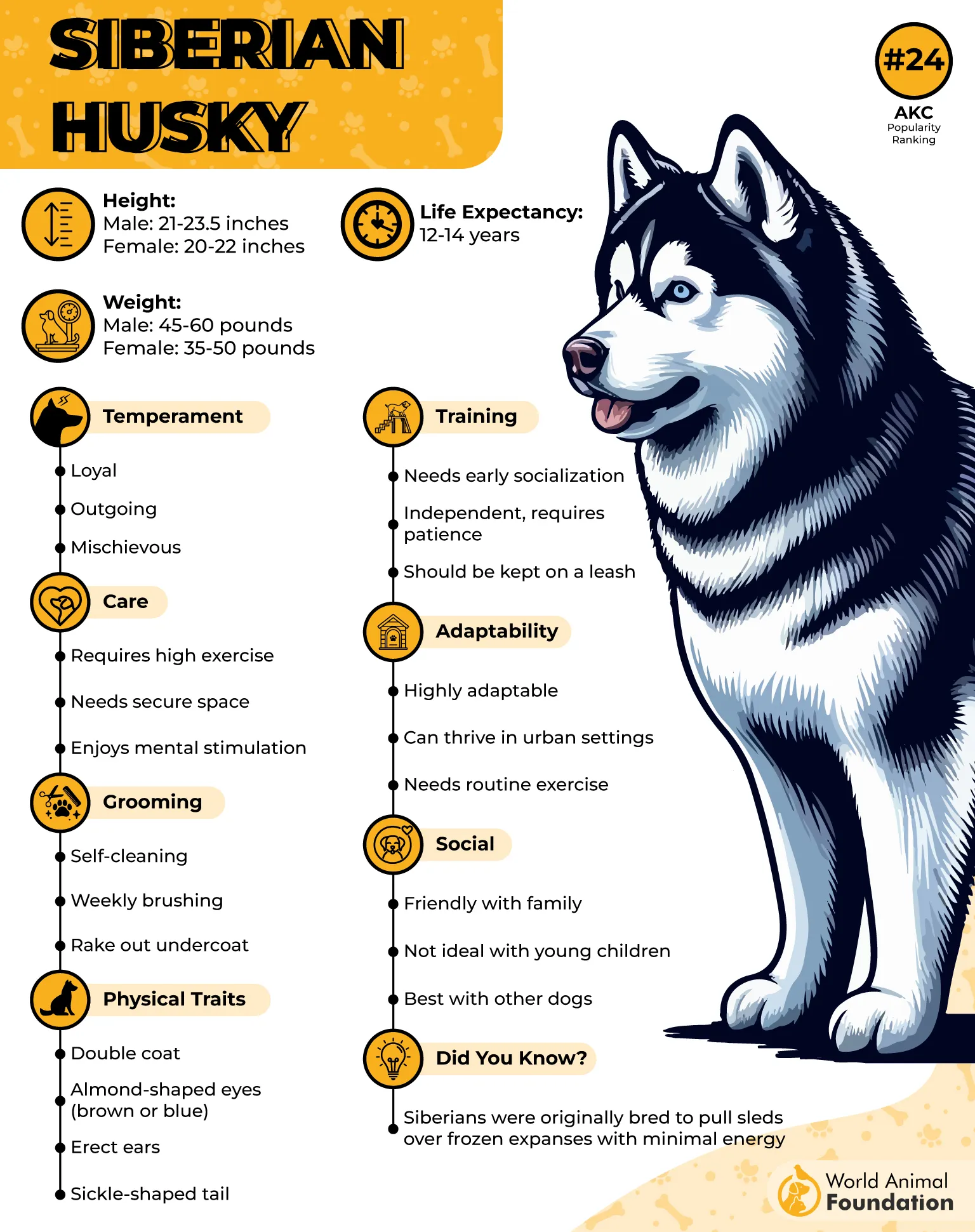
Training
Training a Siberian Husky requires consistency and patience. Known for their intelligence and independence, Huskies respond well to positive reinforcement techniques but can quickly lose interest in repetitive commands.
Britannica reports that Siberian Huskies are prone to causing damage in the home if they don’t get enough exercise or are left alone for extended periods. Early socialization and obedience training are key to channeling their energy productively, especially during hikes where distractions abound.
Regular mental stimulation and physical outlets help reduce undesirable behaviors while strengthening your bond.
Did you know? In 1925, a team of Siberian Huskies led the final leg of the “Great Race of Mercy,” delivering life-saving diphtheria serum to Nome, Alaska, a feat that inspired the annual Iditarod Trail Sled Dog Race.
2. Australian Shepherd
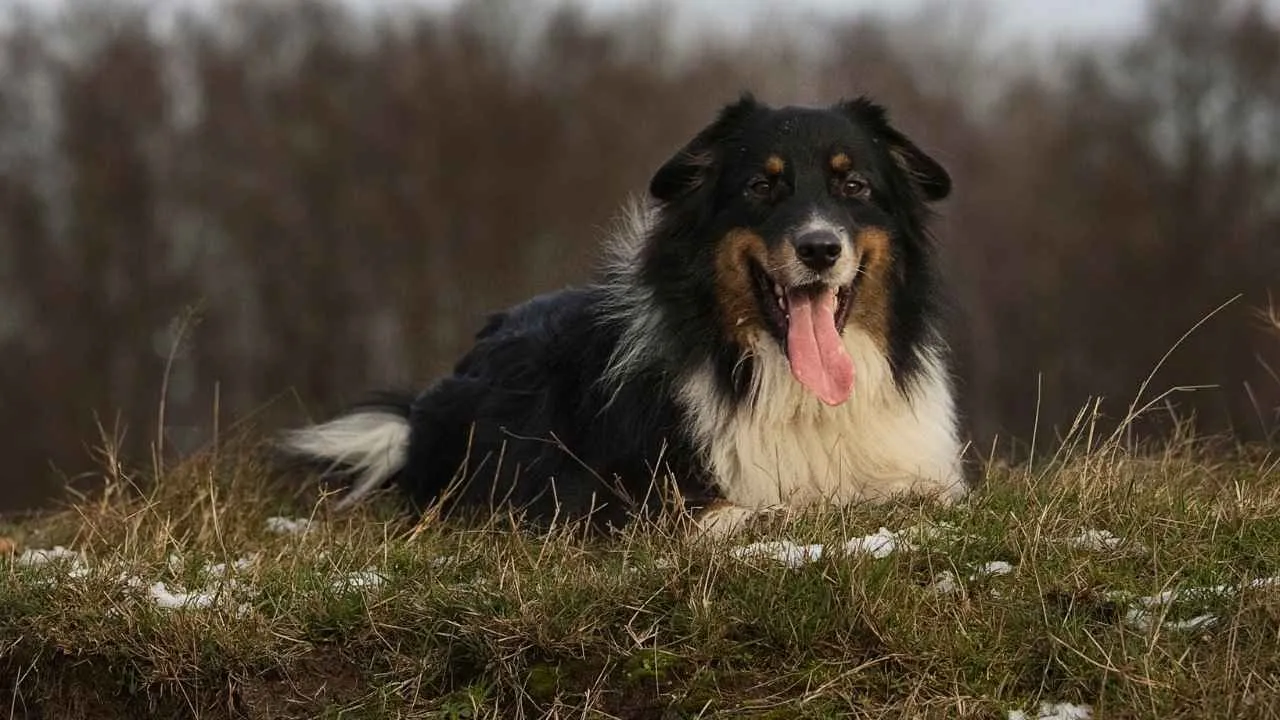
With roots tracing back to the western United States, not Australia, despite its name, the Australian Shepherd, also known as the Aussie, is a robust herding breed with unmatched stamina and intelligence. AKC describes the Australian Shepherd as intelligent, driven to work, and full of energy.
Weighing between 40–65 pounds and standing 18–23 inches tall, Aussies boast striking coats in black, red, blue merle, or red merle, often adorned with copper points and white markings. Their expressive eyes can be brown, blue, amber, or even two different colors.
Originally bred for ranch work, they remain a favorite among herders and outdoor enthusiasts alike. Bred for long hours of movement and problem-solving, Australian Shepherds are exceptional hiking partners. Their agility, loyalty, and alert nature make them both energetic companions and dependable trail sentinels.
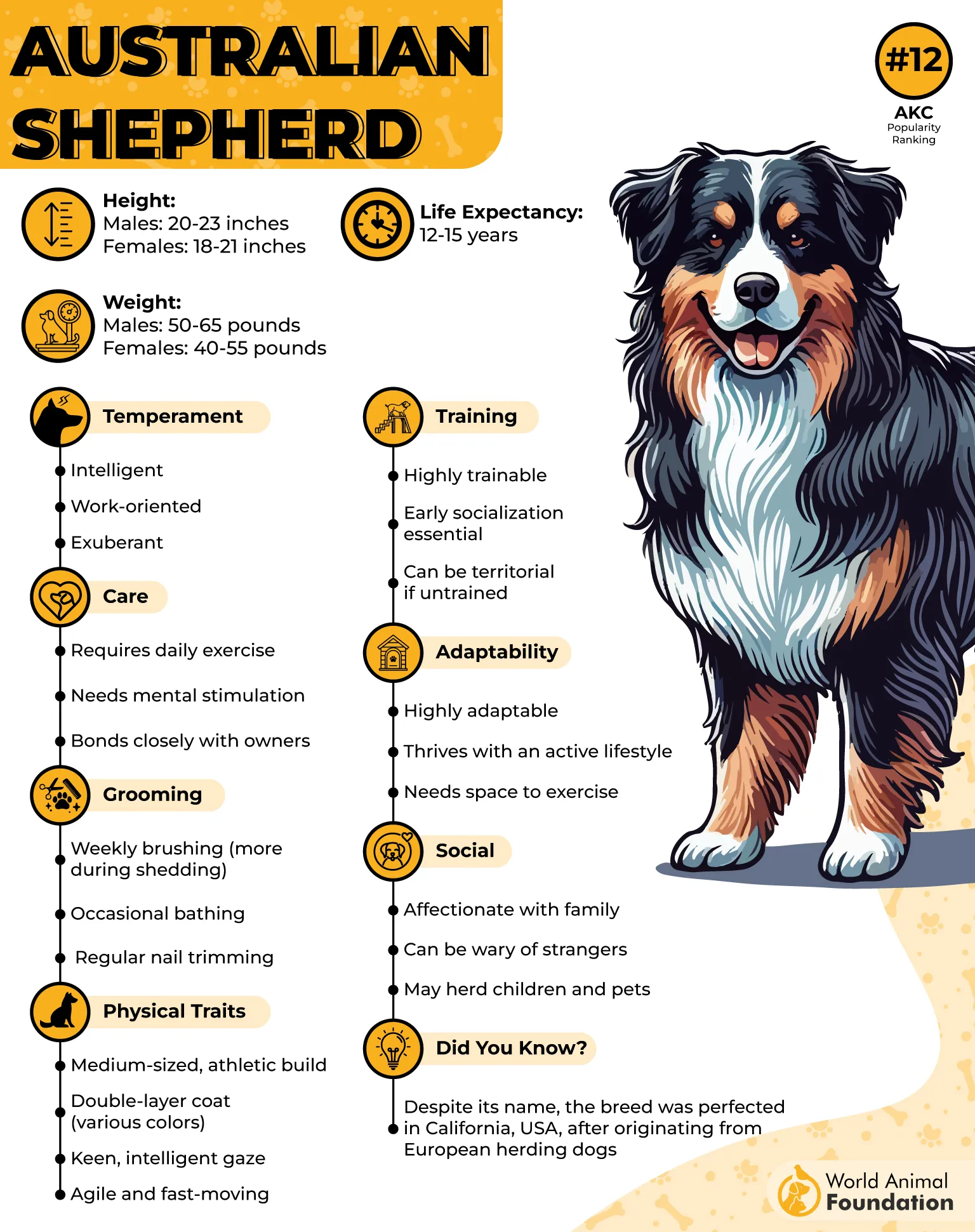
Training
Australian Shepherds thrive when mentally and physically engaged. Their natural intelligence and eagerness to please mean they respond well to consistent, positive reinforcement techniques.
Early socialization and obedience training are essential to harness their herding instincts constructively. Without structure, their high energy can lead to restlessness or mischief, so regular training helps develop a well-balanced, trail-ready dog.
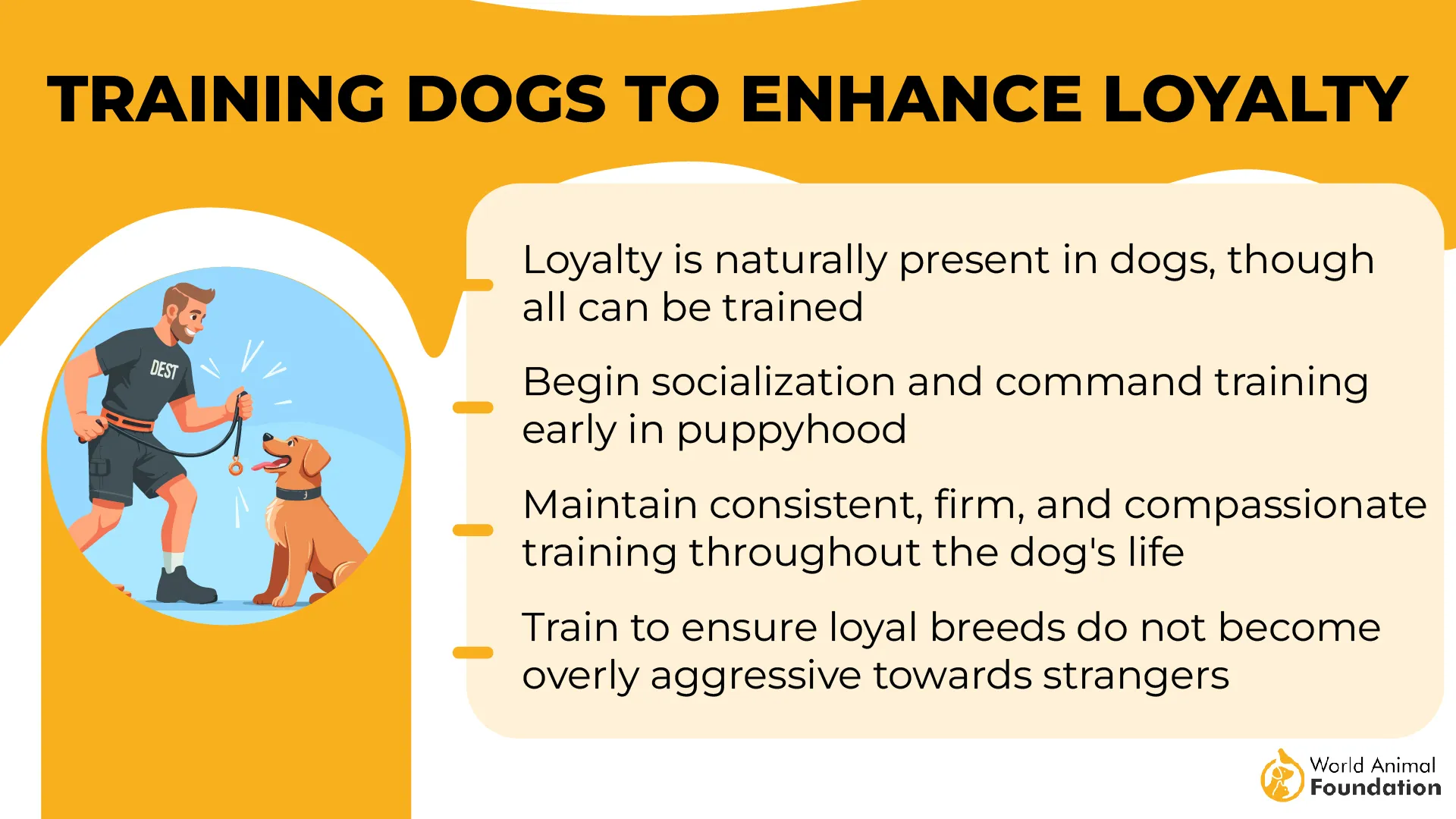
Did you know?
Australian Shepherds are a staple on the rodeo circuit, often seen assisting cowboys with their sharp herding instincts and agile moves.
3. German Shorthaired Pointer
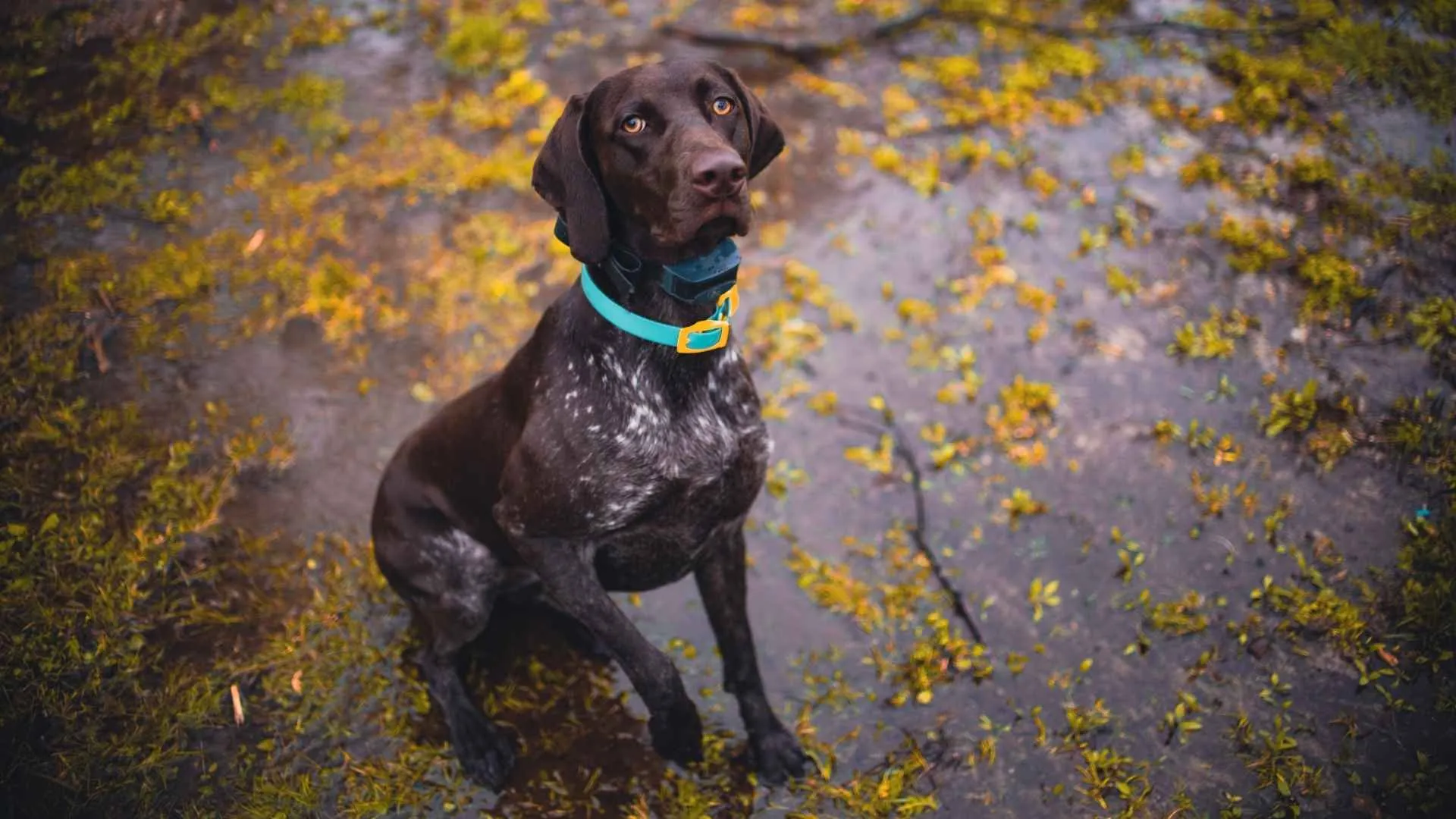
Also known as the GSP, the German Shorthaired Pointer is a member of the Sporting Group and is widely celebrated for its stamina, agility, and high energy levels. Originally bred in Germany in the 1700s as a versatile hunting dog, this breed has retained its enthusiasm for outdoor adventures.
With a height ranging from 21–25 inches and a weight between 45–70 pounds, the GSP possesses a muscular build, water-repellent coat, and strong prey drive. Its solid liver or liver-and-white coat, droopy ears, and almond-shaped dark brown eyes give it both elegance and athletic appeal.
WebMD states that their long muzzles are well-adapted for hunting, being significantly longer than those of many other breeds. GSPs are especially suitable for hikers seeking an enthusiastic partner who thrives in diverse terrains and climates.
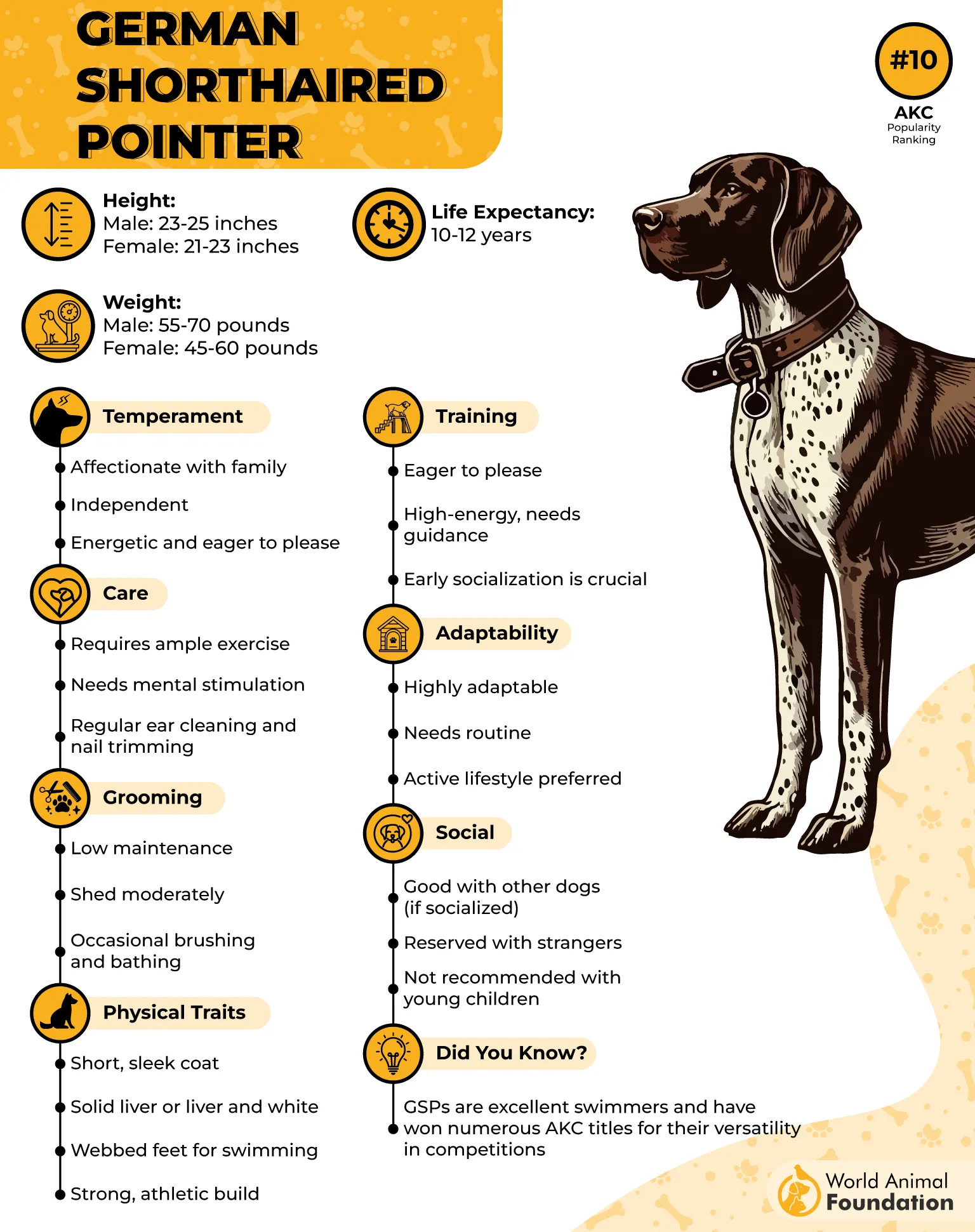
Training
Early training is essential for this spirited breed. These agile dogs are eager to learn but can be a handful between the ages of six months and three years. Positive reinforcement and consistency work best, especially when introduced early.
Their intelligence and desire to please make them quick learners, ideal for mastering off-leash commands, crucial on trails. Many top obedience and agility champions, like those trained by Belinda Venner, have emerged from this breed due to their exceptional trainability.
Fact: GSPs are still used today for tracking and retrieving game on land and in water across the world.
4. Vizsla
Also known as the Hungarian Vizsla or Magyar Vizsla, this elegant sporting breed has been prized for centuries for its exceptional hunting instincts and devotion to its human companions. Originating in Hungary during the Middle Ages, Vizslas were bred to work as both pointers and retrievers, often traversing open plains with grace and stealth.
Their lean, muscular build, reddish-gold coat, and friendly disposition make them an ideal choice for hikers looking for an athletic partner. Standing about 21–24 inches tall and weighing between 44–60 pounds, they thrive in active households and handle warm weather with ease, making them excellent summer hiking companions.
Training
Highly intelligent and deeply loyal, Vizslas respond well to positive, reward-based training. Their eagerness to please, combined with their sharp minds, allows them to learn commands quickly, though their high energy can also lead to unwanted behaviors if not properly channeled.
Early socialization and consistent guidance are essential, especially for first-time owners. Structured training classes can be beneficial for managing their spirited personalities. Regular interaction with other dogs and people from a young age will help them grow into balanced, confident adults.
Did you know? Vizslas nearly vanished by 1900 but were revived from just a dozen dogs, and once gifted only to royalty, they earned the nickname “Gift of Kings.”
5. Australian Cattle Dog
Originally bred in the harsh terrain of the Australian Outback, the Australian Cattle Dog—also known as the Blue Heeler, Red Heeler, or Queensland Heeler—is a muscular and determined herding breed. With a compact frame standing 17–20 inches tall and weighing between 35–50 pounds, this high-energy dog thrives in active households.
Developed in the 19th century to control cattle with speed and stamina, this breed still carries those athletic instincts today. Their agile movements, endurance, and love for challenges make them great hiking buddies, capable of navigating tough trails with ease.
Training
These athletic dogs are highly intelligent and responsive, but they require structured training from an early age. Positive reinforcement—using treats, toys, and verbal praise—works best to build a trusting bond and encourage desired behaviors.
These dogs enjoy having a job to do and respond exceptionally well to consistency, making them perfect candidates for off-leash commands and trail etiquette during hikes.

Did you know? An Australian Cattle Dog named Bluey holds the Guinness World Record as the oldest dog ever recorded, living to the age of 29 years and five months.
6. Weimaraner
Known as the “Gray Ghost” for its sleek silver-gray coat and stealthy movement, the Weimaraner is a spirited hiking companion bred for endurance and speed. Originating in 19th-century Germany, this sporting breed—also called the Weimaraner Vorstehhund or simply “Weim”—was developed by nobles to pursue large game, later transitioning to bird hunting and retrieving.
With a graceful, athletic frame, hanging ears, and soulful amber or blue-gray eyes, the Weimaraner stands 23–27 inches tall and weighs between 55–90 pounds. These high-energy dogs thrive outdoors and enjoy lengthy excursions through challenging terrain.
Training
These hiking dogs are intelligent and eager to learn, but their boundless energy can test your patience. It’s best to train them after physical activity—otherwise, their desire to burn energy may overshadow their ability to focus. Early obedience training is crucial; teaching commands like “sit,” “stay,” and “come” helps manage their excitement and assertiveness.
Establishing boundaries from the start and staying consistent will curb behaviors like jumping or play biting. These dogs benefit from firm leadership and reward-based methods to build trust and responsiveness.
Fun Fact: Weimaraner puppies are born with stripes that fade in just a few days. U.S. President Dwight D. Eisenhower once had a Weim named Heidi roaming the White House grounds.
7. Bernese Mountain Dog
The Bernese Mountain Dog, affectionately known as the Berner, hails from Switzerland and traces its lineage back over 2,000 years to Roman mastiffs. A member of the Working Group, this sturdy, large breed was historically used for hauling carts, herding livestock, and guarding farmlands in the Swiss Alps.
Berners typically stand between 23 and 27.5 inches tall and weigh 70 to 115 pounds. Their distinctive tri-color coat—black, rust, and white—along with their broad chest and gentle eyes, gives them an unmistakable and noble appearance.
While they don’t possess the endless energy of some breeds, their strength and calm endurance make them great hiking partners, especially in cooler climates.
Training
Bernese Mountain Dogs are intelligent and eager to please, which makes them relatively easy to train. However, they respond best to positive reinforcement and gentle guidance, as they can be sensitive to harsh corrections.
Early socialization and structured training are essential to help this intelligent breed build confidence and reduce separation anxiety. Thanks to their people-loving nature, Berners thrive when included in family activities and are especially responsive to interactive training sessions.
Fact: These intelligent dogs have been recognized for their heroism—such as saving people from fires and ocean currents—and are known to repeat funny antics just to make people laugh, often called the “Berner chuckle.”
Conclusion
Hiking with a four-legged companion can transform an ordinary trek into a heartwarming and energetic adventure. The right hiking partner isn’t just about stamina; it’s about companionship, loyalty, and a shared love for nature. While large breeds like the Bernese Mountain Dog excel in rugged terrains and cold and wet conditions, smaller dogs like the Jack Russell Terrier also bring undeniable tenacity and spirit to any trail. These adventure dogs thrive on movement and engagement, making them excellent motivators for maintaining a healthy lifestyle.
Most dogs, including agile breeds like the Border Collie, benefit from structured outdoor activities that challenge both their mind and bodies. When planning your next hike, don’t forget essentials like a lightweight sleeping bag for your pup and plenty of water. Ensuring your dog’s exercise needs are met helps keep them generally healthy and emotionally fulfilled. Whether you choose a robust working dog or one of the energetic smaller dogs, these breeds are built to be more than just companions; they’re trail-ready adventurers.


